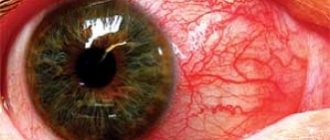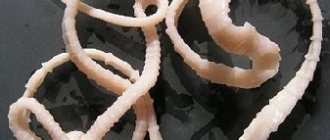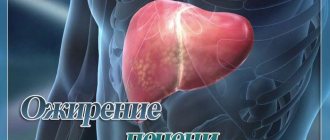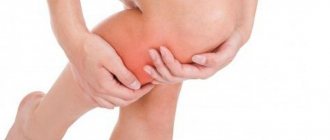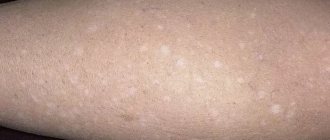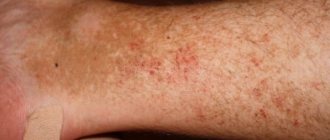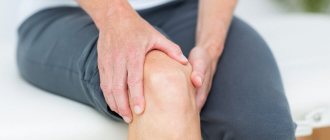Dermatological problems quite often become the cause of both physical and psychological discomfort. Vesicles, the appearance of which is characteristic of dermatoses, crack over time, and ulcers and wounds appear in their place. A particular danger is the addition of a bacterial infection; such complications require treatment with antibiotics.
Eczema on the legs is one of the forms of the disease that affects the skin of the lower extremities and feet. In most cases, eczema of the legs develops against the background of varicose veins, so as a preventative measure, dermatologists recommend using comfortable shoes and following the principles of proper nutrition to prevent the occurrence of problems with excess weight.
The article provides information about the causes of eczema on the legs, symptoms of the disease, as well as what types of eczema on the legs are most common. In addition, the material contains information about methods of treating eczema on the hands and feet, both with the help of medications and through the use of alternative techniques.
Important! The therapeutic course is based on the use of traditional methods; treatment with folk remedies is allowed as an additional technique, the use of which is possible only after consultation with a dermatologist. In the traditional treatment of eczema on the hands and feet, herbal infusions, decoctions and healing ointments are usually used.
Causes of eczema on the hands and feet
What causes eczema on the legs? With eczema on the legs, the cause of the disease is quite difficult to determine. The pathology is neuro-allergenic in nature, and a predisposition to its development can be inherited. There are many factors that contribute to the manifestation of the disease, but in most cases it is impossible to establish the true cause of its manifestation, so the issue of the etiology of eczema on the legs is quite relevant in modern medicine.
Eczema on the heels and lower extremities is a relatively young disease that was isolated from a number of other types of dermatoses not so long ago. The disease is one of the serious dermatological diseases, the treatment of which requires the use of serious drugs and proven techniques.
Additional Information! According to medical statistics, every 15 children and 30 adults on the planet suffer from eczema, so preventive measures are strongly recommended by dermatologists. After all, as practice shows, curing eczema is much more difficult than preventing its manifestation.
Factors contributing to the manifestation of eczema on the leg:
- disturbances in the gastrointestinal tract;
- genetic predisposition;
Many parents suffering from dermatological diseases wonder: how to get rid of eczema and prevent the likelihood of its occurrence in a child? The answer is obvious: it is necessary to follow the principles of proper nutrition, avoid eating allergens, especially for infants, spend more time in the fresh air and avoid damage to the epidermis.
- leg injuries;
- the body's sensitivity to chemically active substances;
- excessive use of cosmetics and detergents, which should not be done for dermatitis;
- overweight and varicose veins.
Additional Information! Patients with diabetes mellitus, as well as those suffering from vegetative-vascular dystonia and disturbances in the functioning of the cardiovascular system are more often susceptible to the disease.
We understand the possible causes of the disease
Experts agree: the causes of eczema on the legs are associated with the pathological activity of the immune system. It often happens that a person works in a factory, comes into contact with some aggressive substances or potentially aggressive chemicals, or suffers from atopic dermatitis since childhood, and after a few years he develops this skin disease.
But the causes of eczema are not always so obvious. Often, patients, together with doctors of various specialties, cannot determine for a long time what triggered the development of dermatosis. And this must be done: in order to put eczema into remission, it is necessary to protect the sick person from contact with provoking factors. Otherwise, there is no way to get rid of the disease.
The most common predisposing factors are:
- the patient has a history of allergic dermatitis, allergies to food, medications, pollen or other common allergens;
- chronic diseases of the digestive tract;
- endocrine disorders, hormonal imbalance in the body;
- helminthiases;
- disturbances in the functioning of the liver and kidneys - organs that are responsible for cleansing the body and removing toxins;
- skin damage, fungal infections of the feet;
- immune disorders, autoimmune pathologies, hereditary predisposition.
Particular attention should be paid to the state of the digestive system. Many people with eczema on their legs, arms and other parts of the body have gastrointestinal pathologies. The immune system and skin can react with a rash to a severe disturbance of the intestinal microflora, the mucous membrane of which acts as a protective barrier and contains a large number of immune cells.
The state of the nervous system also affects general immunity and skin function. Constant worries, nervous breakdowns, lack of sleep, and anxiety factors contribute to the development of eczema. But most often, the disease progresses under the influence of several predisposing factors, on which both the location and characteristics of the rash on the legs depend.
Eczema on the arms and legs, what eczema looks like
Eczema of the legs is accompanied by the appearance of a rash. Vesicles formed in problem areas burst over time and weeping appears in their place. Infectious eczema is dangerous because a bacterial infection is added to the underlying disease. In advanced cases, the rash spreads to other areas of the skin, forming peculiar foci.
Timely use of remedies for eczema on the legs helps reduce the symptoms of the disease and achieve significant remission. The disease is recurrent in nature and is also characterized by seasonal exacerbations.
Eczema on the sole of the foot causes particular discomfort; the foot may become covered with cracks, which is accompanied by pain. To prevent the development of pathology, dermatologists recommend using comfortable low-speed shoes made from natural materials that do not cause allergic reactions.
Treatment methods
Treatment of eczema on the legs begins with a correct diagnosis. When the first signs and symptoms of the disease appear, it is strongly recommended not to postpone a visit to the dermatologist. This is due to the fact that advanced eczema is difficult to treat, while at the initial stage it is possible to neutralize the exacerbation and get rid of a lot of unpleasant sensations without much difficulty.
By clarifying the diagnosis, it is important to identify the root cause of the disease and associated factors that influence its development and course. If this is not done, then the treatment measures will not give the desired result, but will only temporarily relieve symptoms.
Drug treatment of eczema is carried out with antipruritic and antihistamine drugs, hormonal ointments that relieve inflammation, sedatives and sedatives. Physiotherapeutic procedures are prescribed based on determining the form and severity of the disease. These include methods such as laser, ozone and magnetic therapy. During exacerbations of eczema, direct contact of inflamed areas with water and cosmetics should be minimized. When it comes to clothing, it is better to give preference to natural fabrics. Throughout the treatment, patients are strictly prohibited from drinking alcoholic beverages and smoking. As for the organization of nutrition, for this category of people, in order to more quickly exit the exacerbation stage, anti-allergenic diet therapy is recommended. Treatment at home will be the best option.
Among the effective ointments used to treat foot eczema, the most popular are:
- hydrocortisone;
- salicylic acid, used as an antiseptic;
- boric;
- Wilkinson's ointment.
Treatment of legs affected by eczema with ointments can be done both in hospital and at home.
Symptoms and signs of eczema on the legs
Symptoms and treatment of eczema on the legs are interrelated concepts, since, as a rule, dermatologists prescribe therapy after examining and determining the stage and type of pathology. For more severe symptoms, serious general medications are prescribed, mainly in the form of tablets and capsules. You can get rid of the manifestations of the disease at the initial stage with the help of external local remedies, and sometimes only with the help of folk recipes.
Signs of eczema on the legs:
- formation of fluid-filled pimples (vesicles) on the skin;
- the appearance of burning and itching;
- the temperature of the affected areas increases, skin color changes;
- vesicles burst, and oozing forms in their place;
- the temperature rises, the patient’s general well-being worsens;
- dry eczema on the legs and arms is characterized by the appearance of cracks, not accompanied by the formation of wet spots;
- the appearance of swelling.
Additional Information! Associated symptoms that appear in the absence of timely treatment for eczema on the legs include headache, increased anxiety, nervousness, inattention and irritability. This is not to mention the fact that the disease has a rather unaesthetic appearance, which is fertile ground for the development of complexes.
Types of disease
Based on what causative factors cause eczema of the lower extremities, it seems possible to distinguish several types:
- idiopathic chronic eczema;
- mycotic, caused by infection of fungi and microbes;
- professional;
- dyshidrotic;
- callosal;
- children's;
- varicose.
Dry eczema on the legs usually begins in a sharp form and is characterized by an acute course. Symptoms: literally within one day, the skin becomes red, covered with small blisters filled with a liquid composition, and swelling appears on the legs. Judging by the external signs, the condition of the skin resembles burns. After some time, the eczema turns into a weeping eczema, when the vesicular rashes self-open, which, if things go well, gradually dry out. The skin of the legs and feet cracks unevenly, and it is possible to distinguish between affected and healthy areas. Dry eczema always causes severe itching.
The occurrence of weeping eczema on the legs is accompanied by the presence of redness and swelling, after which, in a relatively short period of time, the appearance of vesicles can be observed in these places. The condition of the legs usually remains unchanged for several days. After a while, the vesicles burst with the release of exudate. The affected areas of the legs heal very poorly and constantly get wet. This indicates that measures must be taken, otherwise the skin will thicken in areas, it will become red-blue in color, and in the future pigmentation will remain at the site of the lesions.
The causes of microbial eczema are mechanical damage to the top layer of skin and infection in the wound. At the same time, swelling and redness are characteristic of any injury, but symptoms such as pustular rashes and the appearance of crusts already indicate the presence of signs of eczema.
This form of the disease, such as varicose eczema on the legs, tends to manifest itself when varicose veins on the legs are advanced. Symptoms and signs of the disease: in the affected areas, slight redness of the skin and the appearance of age spots can initially be observed. A little later, blistering rashes appear. If you do not start treating eczema on the legs in the initial stage, then, as with any other type of it, the next stage will be wetting. The situation is complicated by the proximity of the veins, and eczema can turn into a deep wound, called in medical terminology a trophic ulcer, which is quite difficult to treat.
Eczema can affect different areas of the legs, spreading to the nails, and may appear on the heels and toes.
It should be borne in mind that during an exacerbation of the disease, pedicures are prohibited and it is recommended to strictly adhere to the rules of hygiene.
Types of eczema on the legs
There are several types of foot eczema. Before treating a disease, a dermatologist must determine the type of pathology and differentiate it from other types of dermatoses that have similar symptoms. To achieve this goal, specialists carry out diagnostic measures.
Types of eczema of the lower extremities
- true. As a rule, the causes of this type of disease are internal causes, in particular dysfunction of the cardiovascular and nervous systems, metabolic disorders;
- mycotic eczema. The disease manifests itself as a result of exposure to a fungal infection;
- callosal. The localization of the disease in the case of callous eczema is the feet. On the skin of the soles, keratinized areas are formed that are susceptible to inflammatory processes;
- varicose eczema. The etiology of this disease is based on impaired blood circulation in the lower extremities and the occurrence of blood stagnation. As a result, varicose veins develop, which contributes to damage to the legs.
Types of eczema
Depending on the characteristics of symptoms and localization of the lesion, experts distinguish several types of eczema of the extremities:
- true (idiopathic);
- microbial;
- varicose;
- mycotic;
- professional.
Each of these forms has its own varieties. For example, idiopathic eczema of the legs is divided into:
- puriginous, involving the folds and the area under the knees;
- horny, located on the heels;
- dyshidrotic, forming on the soles of the feet.
The microbial form of eczema is always located in the area of damaged skin: scratches, burns, cracks, diaper rash. The favorite place for the rash to occur is the area of the knee joint.
Varicose eczema develops as a symptom of varicose veins and most often appears on the ankles or involves the ankle joints. The mycotic form is characterized by its location on the soles, between the toes and in the nail area.
Occupational eczema is most often found on open or mechanically exposed areas of the legs - on the knees, lower leg and ankle.
Is eczema contagious? It has been established that this form of dermatosis belongs to the allergic type, therefore, it is not contagious and is not transmitted from person to person.
Can you get infected with microbial eczema? The answer to this question is also negative. This form of the disease is not caused by pathogens, but by a combination of unfavorable factors. Even if the microorganism gets on the exposed skin of another person, infection will not occur. The infectious agent will either die immediately under the influence of antibodies, or, having penetrated the dermis, cause mild irritation that will quickly pass.
There are many stories about the contagiousness of occupational eczema - supposedly the pathological process can be transmitted in the shower or locker room. It is a myth. The occupational form of the disease is no more dangerous than others.
Stages of pathology development
For eczema on the legs, treatment is prescribed depending on the stage of the disease; the more advanced the form of the disease, the more serious the medicine will be required.
Stages of the disease:
- eczema of the legs (photo), initial stage. This stage is characterized by the appearance of rashes on the skin, which is accompanied by burning, itching, and swelling;
- the papulovesicular stage is characterized by the formation of vesicles at the affected sites;
- wet stage. The vesicles gradually burst, and oozing appears in their place;
- crust-forming stage. Wet spots dry out and become crusty;
- The subacute stage is characterized by subsidence of symptoms, dry skin, and peeling;
- chronic stage. Characteristic signs: dry skin, the presence of cracks, age spots and swelling.
What kind of examination do you need to undergo?
An examination for eczema on the legs makes it possible to determine with a high probability the causes that provoked the skin disease. Based on the results of laboratory and instrumental diagnostic methods, it is possible to establish characteristic changes in the blood (excess of antibodies, B-lymphocytes, lack of T-lymphocytes and T-cells), in the functioning of internal organs and systems. This helps to choose the right medical tactics and understand how to treat eczema on the legs in order to achieve long-term remission.
A dermatologist must carry out a differential diagnosis, which makes it possible to distinguish eczema on the legs from diseases with similar symptoms (streptoderma, atopic dermatitis, other allergic dermatoses).
If eczema is suspected, various studies are prescribed to determine the causes of its development and choose treatment:
- allergy tests;
- dermatoscopy;
- Ultrasound of the abdominal organs;
- immunological examination;
- general blood and urine tests;
- blood biochemistry;
- feces for dysbacteriosis;
- culture of exudate to determine the pathogen and its sensitivity to antibiotics.
Since eczema is a polyetiological disease (combines several causes), the examination is comprehensive. Do not be surprised if the doctor recommends undergoing ultrasound diagnostics of the liver (if the results of a biochemical analysis are unsatisfactory, for example) or other organs of the gastrointestinal tract, or asks you to test feces for helminths or dysbiosis. It is important for a specialist to identify disorders that can cause eczema and select treatment in accordance with the information received.
Traditional approach to treating eczema on the legs
How to treat eczema on hands and feet using traditional methods? The most common methods are the use of general medications and topical external agents.
The general action drug allows you to get rid of the internal causes of the disease, while local remedies relieve skin irritation, promote its regeneration and healing.
General medications:
- antihistamines (Diazolin, Tavegil);
- sedatives (“Persen”);
- diuretics (Duphalac);
- corticosteroid drugs (“Prednisolone”);
- drugs to enhance immunity;
- enzymes for disorders of the gastrointestinal tract.
External local agents:
- creams;
- ointments, in particular based on tar, ichthyol;
- alcohol solutions;
- compresses.
Eczema on the legs: treatment with folk remedies
The following traditional medicines have a beneficial effect on the skin of the feet with eczema:
- lotions based on medicinal herbs (chamomile, calendula, St. John's wort, millennial);
- baths;
- decoctions:
- ointments made from propolis, vinegar, vegetable oils, honey;
- compresses from fresh cabbage, grated carrots;
- rub of garlic and honey.
How to prevent eczema on the legs, preventive measures?
To prevent the manifestation of pathology, dermatologists recommend adhering to the following rules:
- adhere to the rules of foot hygiene;
- reduce the amount of overexertion and stress to a minimum;
- control sweat loss;
- walk more in the fresh air;
- follow a hypoallergenic diet;
- Avoid contact with animals and other external irritants that can cause an allergic reaction.
One of the reasons for the occurrence of eczema on the legs and other parts of the body is the patient’s reduced immunity, so proper fortified nutrition, exercise and hardening also help prevent the development of pathology. Following the recommendations of dermatologists and nutritionists helps to significantly reduce symptoms and achieve remission.
Features of treatment
Treatment of eczema on the legs includes the use of both local remedies and preparations for internal use. The doctor’s tactics depend on the examination results. Concomitant diseases that are identified during diagnosis must also be treated. No ointment for eczema on the legs will help put the disease into remission if the dermatosis is caused by dysbacteriosis, liver pathologies or a long-term disease of an allergic nature.
The doctor must look deep into the problem, and not just fight the symptoms of the disease. If possible, eliminate the negative impact of the underlying disease and completely eliminate contact with unfavorable environmental factors.
Prepare for the fact that to treat eczema on your legs you will need to change your professional environment or even take up some other activity.
Medications include antihistamines, corticosteroids, and anti-inflammatory drugs. Treatment of dry eczema on the legs involves the additional use of compounds that reduce itching and flaking of tissues.
When the microbial nature of dermatosis is detected, a specific pathogen is identified. This allows you to select drug therapy with maximum accuracy. Often, specialists use ointments with an antifungal effect, which are combined with antihistamines and B vitamins, to treat microbial eczema on the legs.
When exudate is actively secreted, astringent compounds in the form of lotions (resorcinol, tannin) are used. Local glucocorticosteroids (for example, 0.025% betamethasone dipropionate) must be prescribed. Since it takes several weeks to treat weeping eczema on the legs, it is recommended to use clothes made from natural fabrics and only loose shoes during this time. Pay special attention to personal hygiene. It is necessary to control sweating and prevent secondary infections.
When treating varicose eczema on the legs, the emphasis is on restoring venous circulation. It is recommended to avoid uncomfortable or narrow shoes with high heels, perform special exercises to prevent blood stagnation, and use venotonics.
In this video, experts tell you how to diagnose and treat eczema in modern conditions.


